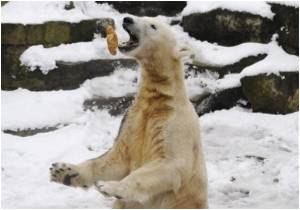Genetic adaptations related to the production of nitric oxide, a compound that cells use to help convert nutrients from food into energy or heat, helps polar bear stay warm, suggest researchers.

Lead researcher Charlotte Lindqvist, PhD, UB assistant professor of biological sciences, said that with all the changes in the global climate, it becomes more relevant to look into what sorts of adaptations exist in organisms that live in these high-latitude environments.
She said that this study provides one little window into some of these adaptations.
Lindqvist asserted that gene functions that had to do with nitric oxide production seemed to be more enriched in the polar bear than in the brown bears and black bears. There were more unique variants in polar bear genes than in those of the other species.
Levels of nitric oxide production may be a key switch triggering how much heat or energy is produced as cells metabolize nutrients, or how much of the nutrients is stored as fat, Lindqvist said.
Durham University's Andreanna Welch, PhD, first author and a former postdoctoral researcher at UB with Lindqvist, said that at high levels, nitric oxide may inhibit energy production.
The paper has been published in the journal Genome Biology and Evolution.
 MEDINDIA
MEDINDIA




 Email
Email




